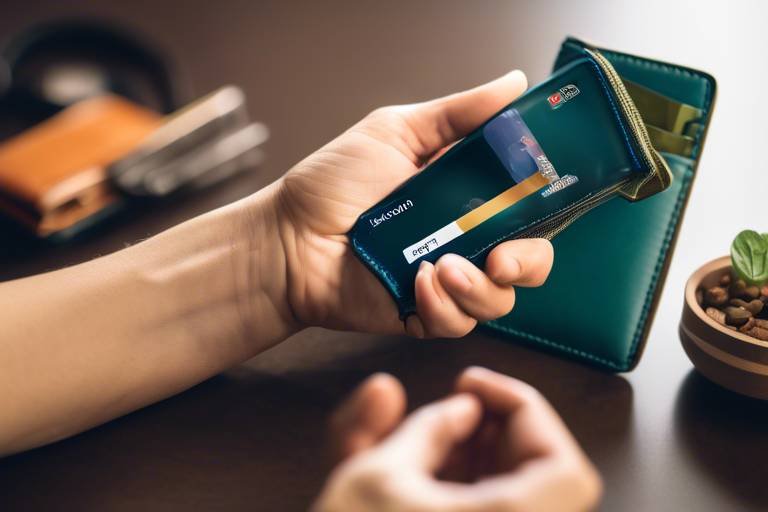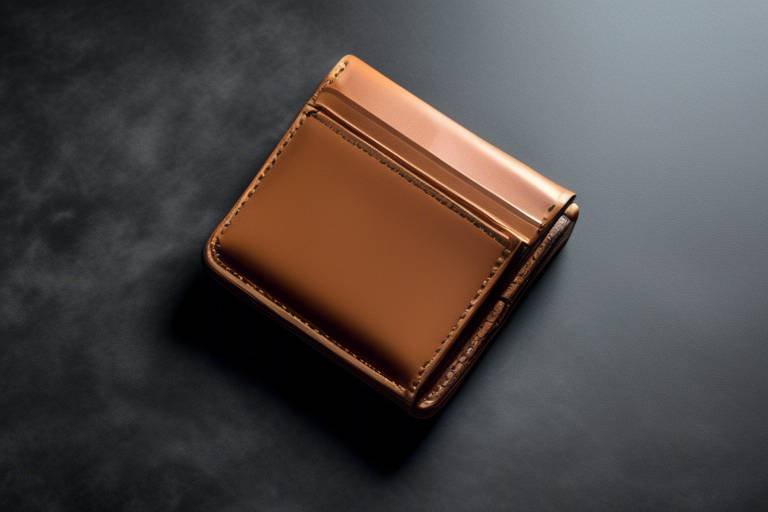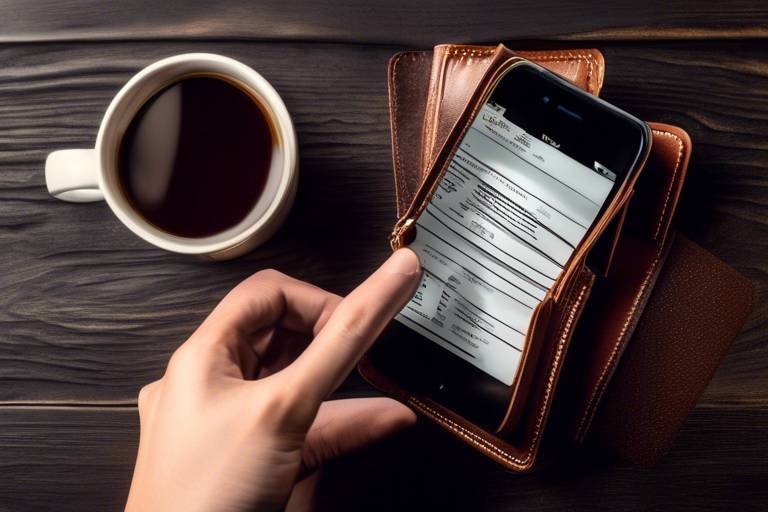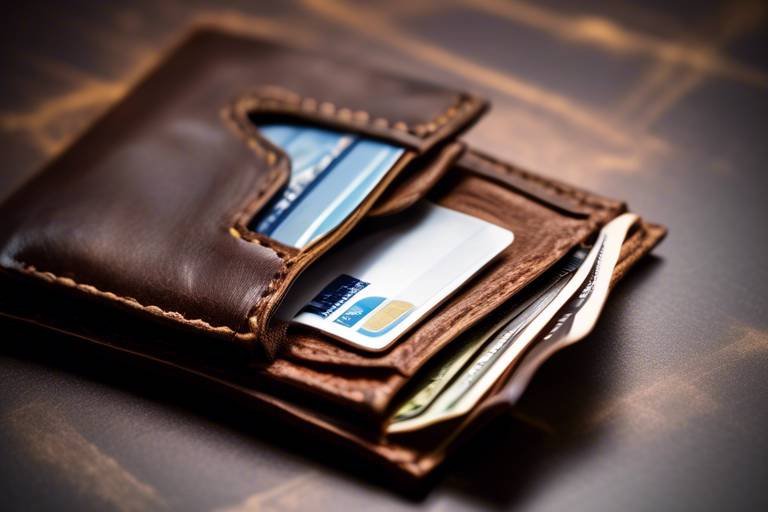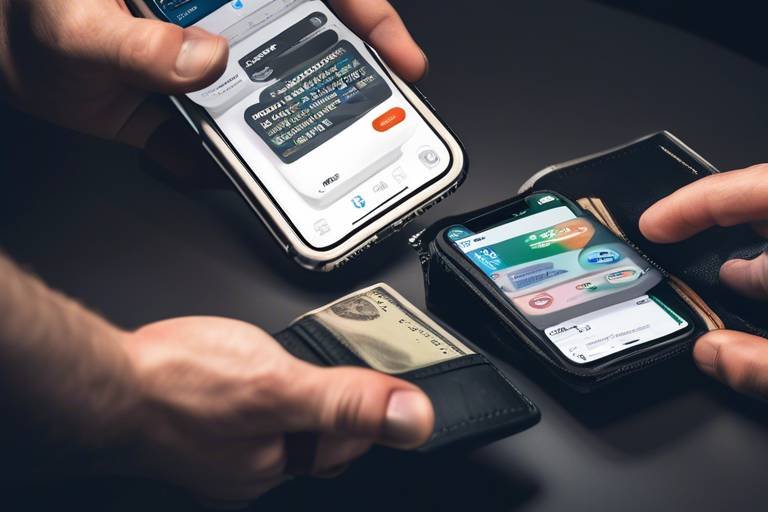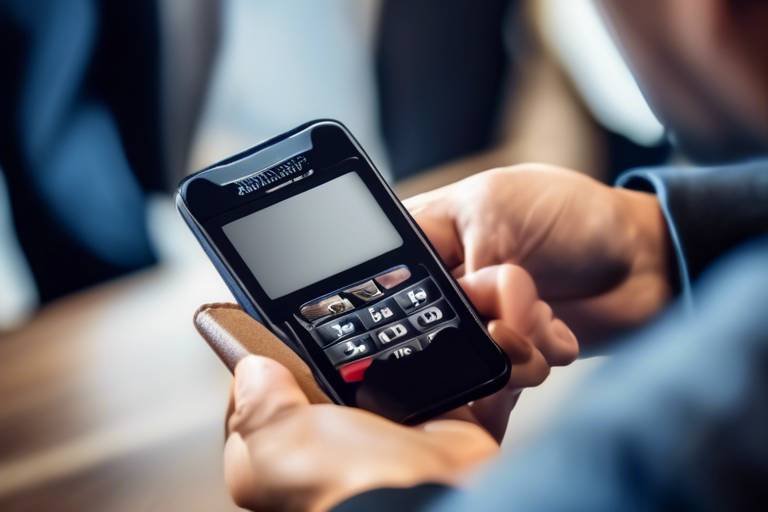How to Create a Wallet for NFTs - A Step-by-Step Guide
In the ever-evolving world of digital assets, NFTs (Non-Fungible Tokens) have taken center stage, capturing the imagination of artists, collectors, and investors alike. But before you can dive into this exciting realm, you need a secure place to store your NFTs. This is where an NFT wallet comes into play. Think of it as your digital safe, where you can keep your unique assets secure from prying eyes. In this guide, we’ll walk you through the entire process of creating a wallet for NFTs, ensuring you have all the essential steps and tips to manage your digital treasures securely.
So, what exactly is an NFT wallet? At its core, an NFT wallet is a digital application that allows you to store, manage, and trade your NFTs. Unlike traditional cryptocurrency wallets that hold fungible tokens like Bitcoin or Ethereum, NFT wallets are specifically designed to handle unique digital items. Each NFT has distinct properties, making them one-of-a-kind, much like a physical collectible. This fundamental difference means that NFT wallets not only store your assets but also keep track of their unique metadata, which is crucial for verifying ownership and authenticity.
As you embark on your NFT journey, understanding the purpose and functionality of these wallets will empower you to make informed decisions. Whether you’re an artist looking to sell your work or a collector hunting for the next big thing, knowing how NFT wallets operate is your first step toward success.
With various options available, selecting the right NFT wallet can feel overwhelming. It’s essential to consider your needs and preferences before diving in. There are two main types of NFT wallets: custodial and non-custodial. Each has its own set of features, benefits, and drawbacks. Choosing the right one is crucial for your overall experience in the NFT space.
Custodial wallets are like renting a storage unit for your NFTs. A third party manages your private keys, allowing for easy access and convenience. However, this arrangement comes with its own set of risks. While custodial wallets can simplify the process for beginners, they also expose you to potential security vulnerabilities. If the provider experiences a breach, your assets could be at risk. Therefore, it’s vital to choose reputable custodial wallet providers.
Some of the most popular custodial wallets include:
- Coinbase Wallet: Known for its user-friendly interface and strong security measures.
- Binance Wallet: Offers a wide range of cryptocurrencies and NFTs, making it versatile.
- Metamask: A favorite among Ethereum users, providing easy access to decentralized applications.
When using custodial wallets, security should be your top priority. Always opt for providers with a solid reputation and robust security protocols. Look for features like insurance against breaches, two-factor authentication, and regular security audits. Remember, your digital assets are only as safe as the wallet you choose!
On the flip side, non-custodial wallets give you complete control over your private keys. This means you are solely responsible for your assets, which can be both empowering and daunting. Non-custodial wallets are often considered more secure since you don’t have to trust a third party with your keys. However, losing access to your wallet due to forgotten passwords or misplaced recovery phrases can lead to permanent loss of your NFTs. It’s a double-edged sword!
Now that you understand the different types of wallets, let’s dive into the nitty-gritty of setting up your NFT wallet. Follow these step-by-step instructions to get started:
First things first, you’ll need to choose a wallet that suits your needs. Once you’ve made your selection, head over to the wallet’s website or download the app. The registration process typically involves providing some basic information, like your email address and creating a password. Make sure to provide accurate information and follow any security protocols outlined during the setup.
After creating your account, it’s time to secure your wallet. Here are some best practices to consider:
- Enable Two-Factor Authentication: This adds an extra layer of security to your account.
- Create Strong Passwords: Use a mix of letters, numbers, and symbols to make your password hard to guess.
- Backup Your Recovery Phrase: Write it down and store it in a safe place, as this will be your lifeline if you ever need to recover your wallet.
By following these steps, you’ll be well on your way to managing your NFTs securely and confidently!
1. What is an NFT wallet?
An NFT wallet is a digital application that allows you to store, manage, and trade your NFTs.
2. Are custodial wallets safe?
While custodial wallets are convenient, they come with risks. Always choose reputable providers and employ additional security measures.
3. Can I lose my NFTs?
Yes, if you lose access to your wallet or forget your recovery phrase, you could permanently lose your NFTs.
4. How do I choose the best wallet for my needs?
Consider factors like security, ease of use, and whether you prefer custodial or non-custodial options before making your choice.

Understanding NFT Wallets
When diving into the world of NFTs (Non-Fungible Tokens), one of the first things you need to grasp is the concept of an NFT wallet. So, what exactly is an NFT wallet? In simple terms, it's a digital tool that allows you to store, manage, and interact with your NFTs. Unlike traditional wallets that hold cash or coins, NFT wallets are designed specifically for digital assets, providing a unique space for your collectibles, art, and other blockchain-based items.
Now, you might be wondering how NFT wallets differ from regular cryptocurrency wallets. While both types of wallets can hold cryptocurrencies, NFT wallets have added functionalities tailored to the unique characteristics of NFTs. For instance, NFTs are unique and cannot be exchanged on a one-to-one basis like cryptocurrencies (think of them as unique pieces of art rather than just currency). This uniqueness means that NFT wallets often include features that allow users to view and showcase their digital assets in a more interactive way.
To help you understand better, let's break down the primary functions of NFT wallets:
- Storage: NFT wallets securely store your digital assets, ensuring that they are safe from theft or loss.
- Management: These wallets allow you to manage your NFTs, making it easy to buy, sell, or trade them on various platforms.
- Interaction: NFT wallets enable you to interact with different NFT marketplaces and platforms, providing a seamless experience for transactions.
Moreover, NFT wallets can be classified into two main categories: custodial and non-custodial. Understanding these categories is crucial because they come with different levels of security, control, and convenience. Custodial wallets are managed by third-party services that hold your private keys, making them convenient but potentially risky. On the other hand, non-custodial wallets give you full control over your private keys, offering enhanced security but requiring you to take on more responsibility.
In essence, NFT wallets serve as the gateway to your digital collectibles, providing you with the tools needed to navigate the exciting world of NFTs. Whether you're an artist looking to sell your work or a collector eager to build your digital art gallery, choosing the right wallet is the first step in your NFT journey. So, before you start collecting, make sure you have a solid understanding of how these wallets operate and what they can do for you.
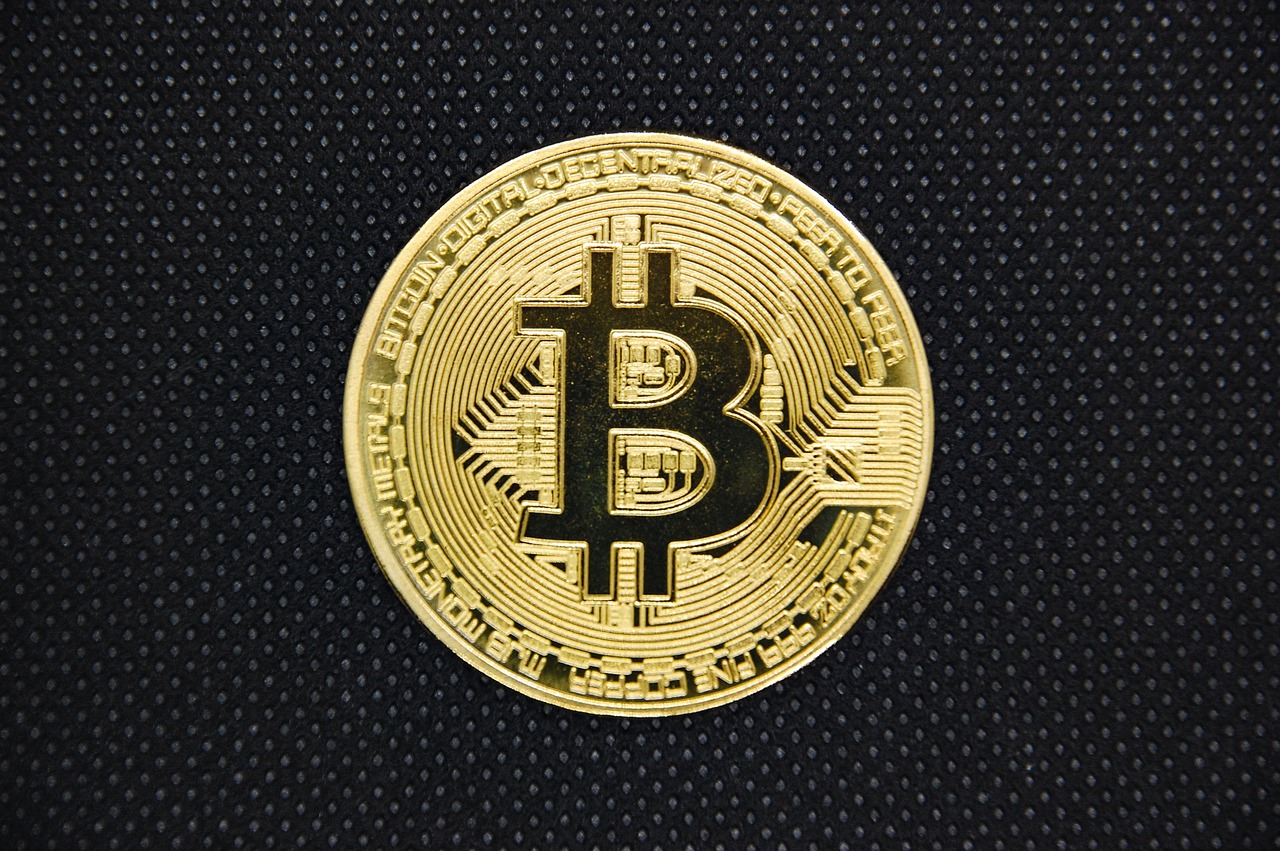
Choosing the Right Wallet
When it comes to diving into the world of NFTs, one of the first decisions you'll need to make is . Think of your NFT wallet as a digital treasure chest; it’s where you’ll store your valuable digital assets. Just like selecting a safe place to keep your physical valuables, the choice of wallet can significantly impact your experience in the NFT space. But how do you know which wallet is the best fit for your needs? Let’s break it down.
There are primarily two types of wallets you can choose from: custodial and non-custodial. Each has its pros and cons, much like choosing between a bank vault and a personal safe. Custodial wallets are managed by a third party, which means they take care of your private keys for you. This can be a convenient option for those who are new to the space or don’t want to deal with the technicalities of managing their keys. However, it also raises some security concerns, as you're putting your trust in another entity to keep your assets safe.
On the other hand, non-custodial wallets give you full control over your private keys. This means that you’re the sole guardian of your digital treasures, which can be empowering but also comes with greater responsibility. If you lose your private keys, it’s game over—you won’t be able to access your NFTs. So, think carefully about what level of control you want versus how much responsibility you’re willing to shoulder.
To help you make a more informed choice, here’s a quick comparison:
| Wallet Type | Control | Convenience | Security |
|---|---|---|---|
| Custodial Wallet | Low | High | Moderate |
| Non-Custodial Wallet | High | Low | High |
As you weigh your options, consider your comfort level with technology and how often you plan to buy, sell, or trade NFTs. If you’re just dipping your toes in the water, a custodial wallet might be the way to go. But if you’re serious about your NFT collection and want to dive deeper, a non-custodial wallet could offer the security and control you need.
Ultimately, the right wallet for you will depend on your individual needs and preferences. Take your time, do your research, and don’t hesitate to ask for recommendations from fellow NFT enthusiasts. After all, your digital assets deserve a safe and secure home!

Custodial Wallets
When diving into the world of NFTs, one of the first decisions you'll face is whether to use a custodial wallet. But what exactly does that mean? In simple terms, a custodial wallet is a type of wallet where a third party—often a cryptocurrency exchange or service provider—holds your private keys on your behalf. This setup can be incredibly convenient, especially for newcomers who may find the technical aspects of managing private keys daunting. However, it does come with its own set of advantages and disadvantages that are essential to understand.
One of the primary benefits of custodial wallets is their user-friendly nature. They often come with intuitive interfaces that make it easy to buy, sell, and trade NFTs without needing to understand the underlying blockchain technology. Imagine trying to navigate a complex maze without a map; custodial wallets provide that map, guiding you through the twists and turns of NFT transactions.
However, convenience often comes at a cost. By entrusting a third party with your private keys, you are essentially giving up some control over your digital assets. This raises significant security concerns. If the service provider experiences a breach, your assets could be at risk. Think of it like leaving your valuables at a friend's house; while you trust them, there's still a chance something could go wrong. It's crucial to choose reputable custodial wallet providers that prioritize security and have a proven track record.
Here are some popular custodial wallet options that cater specifically to NFT users:
| Wallet Name | Features | Best For |
|---|---|---|
| MetaMask | Browser extension, easy integration with dApps | Users looking for seamless dApp interaction |
| Coinbase Wallet | User-friendly interface, strong security measures | Beginners and casual NFT traders |
| Binance Smart Wallet | Wide range of supported tokens, built-in exchange | Active traders and investors |
While custodial wallets offer a more straightforward entry point into the NFT space, it's essential to remain vigilant about security. Always conduct thorough research before selecting a custodial wallet provider. Look for reviews, security audits, and ensure they have robust measures in place to protect your assets. Remember, in the world of digital currencies, your security is in your hands, even if someone else holds the keys.

Popular Custodial Wallets
When diving into the world of NFTs, choosing the right wallet can feel like finding a needle in a haystack. Custodial wallets are among the most popular choices, especially for newcomers, as they offer a user-friendly experience by managing your private keys for you. This means you can focus on collecting and trading your digital assets without getting bogged down in the technical details. Let’s explore some of the most popular custodial wallets that cater specifically to NFT enthusiasts.
One of the standout options is Coinbase Wallet. Known for its robust security measures and ease of use, Coinbase Wallet allows users to buy, sell, and store a variety of NFTs. Its integration with the Coinbase exchange simplifies the process of acquiring new tokens, making it a favorite among those just starting. However, it’s essential to remember that while Coinbase offers convenience, it also means you’re placing your trust in a third party to secure your assets.
Another notable mention is MetaMask. Initially designed for Ethereum-based tokens, MetaMask has evolved to support NFTs seamlessly. It’s a browser extension that allows users to interact with decentralized applications (dApps) directly from their browsers. This wallet is particularly popular among gamers and digital art collectors because it provides easy access to marketplaces like OpenSea and Rarible. However, users should be aware that, while it offers a great balance of functionality and security, it still requires some technical knowledge to navigate effectively.
Then there’s Binance Smart Wallet, which is part of the larger Binance ecosystem. This wallet supports a wide range of tokens, including NFTs, and offers an intuitive interface that appeals to both beginners and seasoned traders. With Binance’s strong reputation in the crypto community, users can feel more secure knowing their assets are in good hands. However, as with any custodial wallet, it’s crucial to do your research and ensure you're comfortable with their security practices.
In addition to these, Trust Wallet is another popular choice that deserves a mention. This mobile wallet supports a vast array of cryptocurrencies and NFTs, providing users with the flexibility to manage their digital assets on the go. Trust Wallet is particularly appealing because it’s decentralized; while it’s still a custodial wallet, it allows users to retain control over their private keys, giving them a bit more peace of mind.
To summarize, here’s a quick comparison of some popular custodial wallets:
| Wallet Name | Key Features | Best For |
|---|---|---|
| Coinbase Wallet | Easy to use, strong security | Newcomers to NFTs |
| MetaMask | Browser extension, dApp support | Gamers and digital art collectors |
| Binance Smart Wallet | Wide token support, intuitive interface | Traders in the Binance ecosystem |
| Trust Wallet | Mobile-friendly, decentralized | Users wanting flexibility |
In conclusion, while custodial wallets offer convenience and ease of use, it’s essential to weigh the pros and cons carefully. Always ensure you choose a reputable provider, as your digital assets’ security is paramount. With the right custodial wallet, you can confidently embark on your NFT journey, knowing your treasures are safe and sound.

Security Considerations
When diving into the world of NFTs, one of the most crucial aspects you need to consider is security. Just like you wouldn't leave your front door wide open, you shouldn't overlook the importance of safeguarding your digital assets. The rise of NFTs has attracted not only artists and collectors but also those with less-than-honorable intentions. So, how can you ensure your wallet remains secure?
First, it's important to understand that custodial wallets, while convenient, come with inherent risks. Since a third party manages your private keys, you must trust that they will keep your information safe. If their security measures are lacking, you could find yourself in a precarious situation. Always choose reputable providers with a proven track record. Look for wallets that have strong security protocols in place, such as encryption and regular audits.
On the other hand, non-custodial wallets give you full control over your private keys, which is a double-edged sword. While you gain enhanced security, you also take on the responsibility of managing those keys. Losing access to your keys means losing access to your NFTs forever. So, keep your private keys stored in a safe place, and consider using hardware wallets for an added layer of protection.
Here are a few best practices to keep your NFT wallet secure:
- Enable Two-Factor Authentication (2FA): This adds an extra layer of security by requiring a second form of verification when accessing your wallet.
- Create Strong Passwords: Use a mix of letters, numbers, and symbols to create complex passwords that are hard to guess.
- Regularly Update Your Software: Keeping your wallet software up to date ensures you have the latest security features and patches.
- Be Wary of Phishing Attempts: Always verify the URLs and sources before clicking on links related to your wallet.
Lastly, consider educating yourself about the latest security trends in the crypto space. Being aware of common scams and security breaches can go a long way in protecting your assets. Remember, in the digital realm, an ounce of prevention is worth a pound of cure!
Q1: What is the safest type of wallet for NFTs?
A1: Non-custodial wallets are generally considered safer as they give you full control over your private keys. However, hardware wallets provide the highest level of security by storing your keys offline.
Q2: Can I recover my NFTs if I lose my wallet?
A2: If you lose access to your wallet and do not have your private keys or recovery phrases, unfortunately, you will not be able to recover your NFTs.
Q3: What should I do if I suspect my wallet has been compromised?
A3: Immediately transfer your assets to a new wallet with a different set of keys and take steps to secure your accounts, such as changing passwords and enabling 2FA.
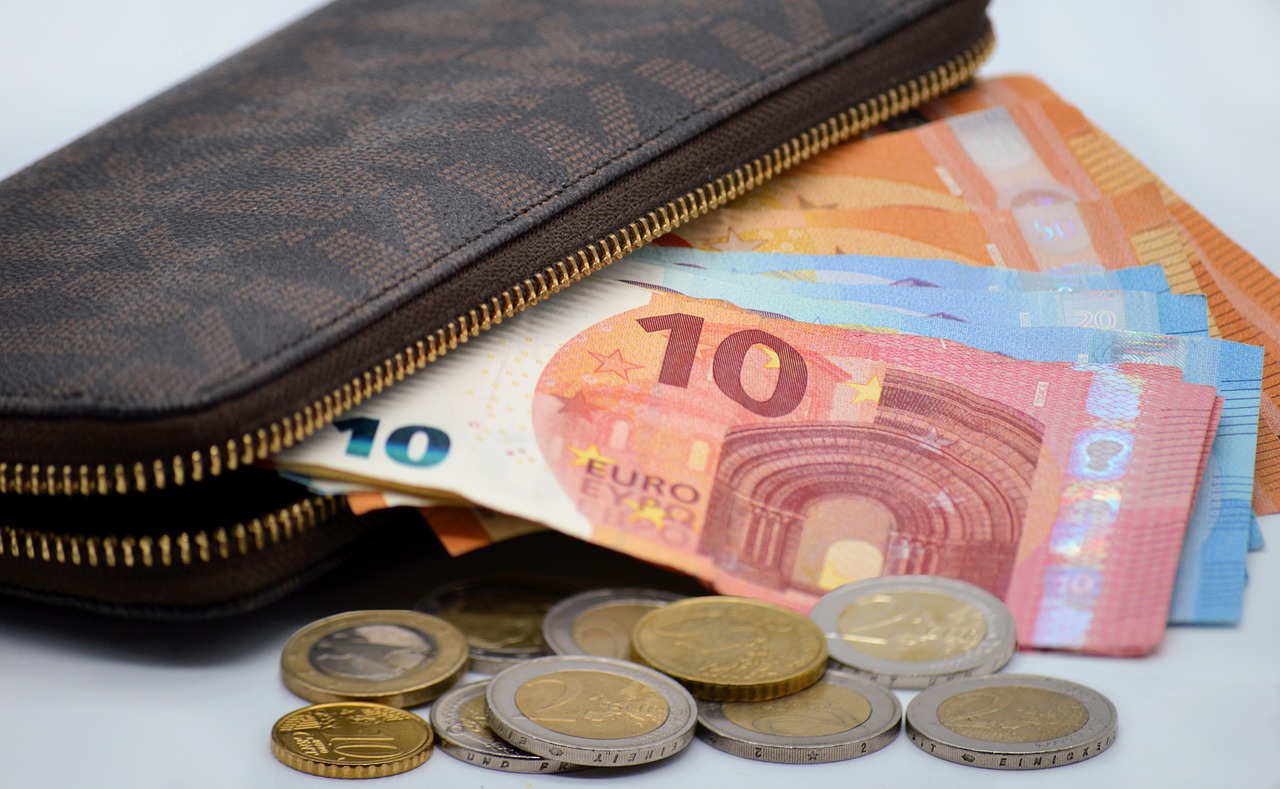
Non-Custodial Wallets
When it comes to managing your NFTs, are like having the keys to your own treasure chest. Unlike custodial wallets, where a third party holds onto your private keys, non-custodial wallets empower you with complete control. This means you are the sole guardian of your digital assets, and with great power comes great responsibility. But what exactly does this mean for you?
One of the biggest advantages of non-custodial wallets is enhanced security. Since you hold the private keys, there's no risk of a third-party provider being hacked and losing your assets. It's like having a personal vault that only you can access. However, this independence also means that if you lose your private keys, your NFTs could be gone forever. So, it's crucial to back them up securely, just like you would with any valuable item.
There are various types of non-custodial wallets available, each with its unique features. For instance, some are software-based, allowing you to access your NFTs via a mobile or desktop application, while others are hardware wallets, which store your keys offline for added security. Here’s a quick comparison of the two:
| Type | Security Level | Accessibility | Best For |
|---|---|---|---|
| Software Wallets | Moderate | High (easy to access on devices) | Frequent transactions |
| Hardware Wallets | High | Low (requires physical access) | Long-term storage |
As you weigh your options, consider what you value most. Do you prioritize convenience or security? If you’re someone who frequently trades NFTs, a software wallet might be more suitable. However, if you’re looking to hold onto your assets long-term, investing in a hardware wallet could be the way to go.
In addition to choosing the right type of wallet, it's essential to familiarize yourself with the setup process. Most non-custodial wallets will require you to generate a recovery phrase when you create your wallet. This phrase is your lifeline—keep it safe and never share it with anyone. Think of it as the secret code to your treasure; lose it, and you could be locked out of your own riches!
In conclusion, while non-custodial wallets offer a greater sense of ownership and security, they also demand a level of diligence from the user. By understanding the implications of having full control over your NFTs, you can make informed decisions that align with your digital asset management goals.
- What is a non-custodial wallet? A non-custodial wallet is a type of digital wallet where the user has full control over their private keys, thus managing their own assets without relying on a third party.
- Are non-custodial wallets safe? Yes, non-custodial wallets are generally considered safer than custodial wallets, as they eliminate the risk of third-party hacks. However, users must take precautions to secure their private keys.
- Can I recover my assets if I lose my private keys? Unfortunately, if you lose your private keys and do not have a backup recovery phrase, your assets may be irretrievable.

Setting Up Your Wallet
Setting up your NFT wallet is the gateway to entering the exciting world of digital assets. Just like you wouldn’t walk into a bank without knowing how to use your account, you want to ensure you’re fully prepared to manage your NFTs. The process is straightforward, but it’s essential to follow each step carefully to avoid any pitfalls along the way. Let’s dive into the nitty-gritty of creating your wallet, starting with downloading the software.
First, you’ll need to choose a wallet that suits your needs. This could be a custodial wallet, where a third-party service manages your keys, or a non-custodial wallet, giving you complete control. Once you’ve made your choice, head to the official website of the wallet provider and download the software. Ensure you are downloading from a legitimate source to avoid scams—think of it as making sure you’re entering a reputable bank rather than a shady back alley.
After downloading, the next step is to create your account. This usually involves providing some basic information like your email address and setting a strong password. Remember, your password is your first line of defense against unauthorized access, so make it complex—think of it as the key to your digital vault. Once you’ve filled in the necessary details, you may need to verify your email address to activate your account. This step is crucial; it’s like confirming that you are indeed the owner of the vault.
Now, let’s talk about securing your wallet. This is where the magic happens! Enabling two-factor authentication (2FA) is a must. It’s like having a second lock on your vault door. Even if someone manages to get your password, they would still need that second factor—often a code sent to your phone—to gain access. Don’t skip this step! Additionally, consider writing down your recovery phrase, which is typically a series of words generated during the wallet setup process. Store this phrase in a safe place, as it’s your lifeline if you ever forget your password or need to recover your wallet.
In summary, setting up your NFT wallet involves:
- Choosing the right wallet type (custodial or non-custodial)
- Downloading the wallet software from a trusted source
- Creating your account with a strong password
- Enabling two-factor authentication for added security
- Safeguarding your recovery phrase
By following these steps, you’ll be well on your way to securely managing your NFTs. Remember, this is not just about storing digital art; it’s about protecting your investments and ensuring you can access your assets whenever you need them. With your wallet set up, you’re ready to explore the vibrant world of NFTs!
Q: What is an NFT wallet?
An NFT wallet is a digital wallet specifically designed to store, manage, and transfer non-fungible tokens (NFTs). It can be custodial or non-custodial, depending on whether a third party manages your private keys.
Q: Why do I need to secure my wallet?
Securing your wallet is essential to protect your digital assets from theft or unauthorized access. Using strong passwords, enabling two-factor authentication, and safeguarding your recovery phrase are critical steps in keeping your NFTs safe.
Q: Can I use a regular cryptocurrency wallet for NFTs?
While some cryptocurrency wallets support NFTs, it’s advisable to use a wallet specifically designed for NFTs to ensure compatibility and enhanced features tailored for managing these unique digital assets.
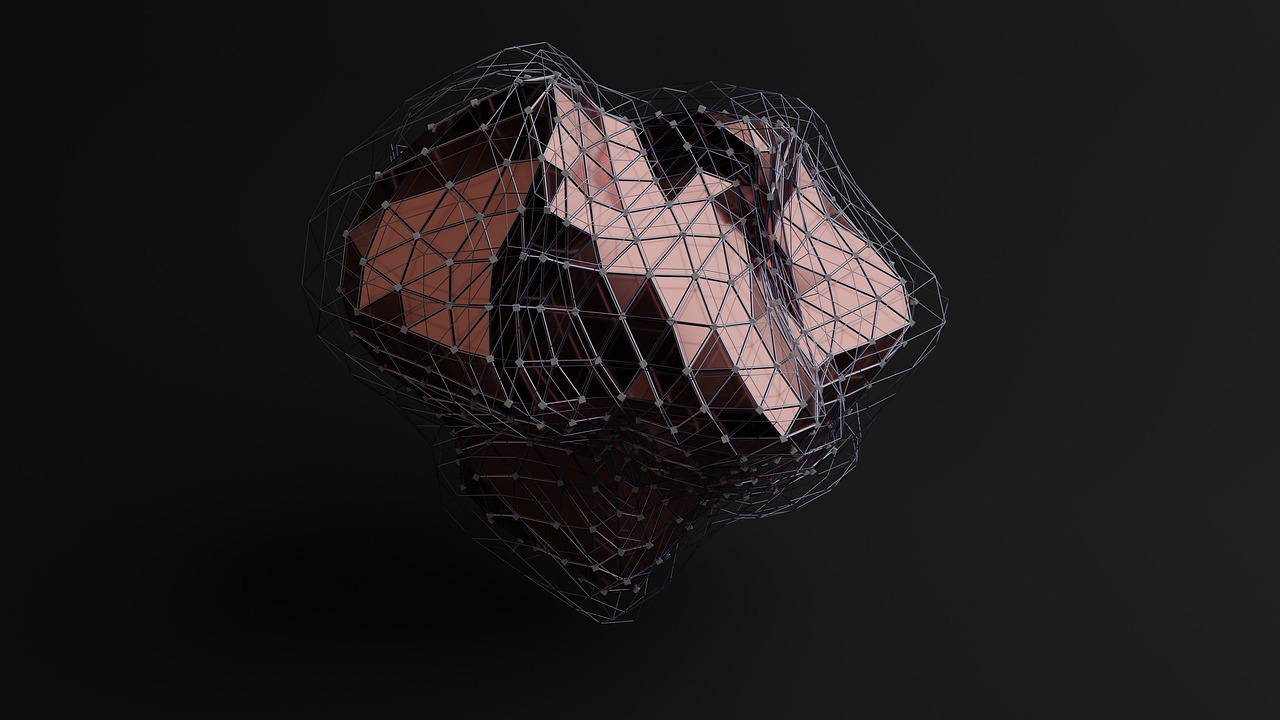
Creating Your Account
Creating your account for an NFT wallet is a crucial first step on your journey into the world of digital assets. Just like setting up a new email account, this process requires you to provide some personal information, but it’s essential to ensure that you’re taking the right precautions to safeguard your assets. First, you’ll need to choose a wallet provider that aligns with your needs—whether it’s a custodial wallet that offers convenience or a non-custodial wallet that grants you full control over your private keys. Once you've made your choice, you can begin the account creation process.
To get started, head over to the wallet provider’s website or download their app. Most platforms will require you to fill out a registration form. This typically includes:
- Your email address
- A strong password
- Some basic personal information (like your name)
After entering your details, you might be asked to verify your email address. This step is crucial as it helps ensure that the account is linked to you. Check your inbox for a verification email and click the link provided. It’s like getting a golden ticket—without it, you won’t be able to access your new wallet!
Once your email is verified, you can log into your account. Here, you’ll often be prompted to set up additional security features. This is where things get serious. Enabling two-factor authentication (2FA) is highly recommended. It adds an extra layer of security, making it much harder for unauthorized users to access your account. Think of it as having a double lock on your front door—more protection means more peace of mind.
Now, let’s talk about passwords. You want to create a password that’s not just strong but also memorable for you. A good rule of thumb is to use a mix of uppercase letters, lowercase letters, numbers, and special characters. Avoid using easily guessable information like your birthday or pet’s name. Instead, consider using a passphrase—a series of random words strung together to create a unique and complex password. This way, it’s easier to remember but hard for others to crack.
After you’ve set up your account and secured it with a robust password and 2FA, the next step is to back up your wallet. Most wallet providers will give you a recovery phrase—a series of words that can be used to restore your wallet if you ever lose access. Treat this phrase like a treasure map; if you lose it, you might never find your way back to your digital assets. Store it in a safe place, away from prying eyes, and never share it with anyone.
In conclusion, creating your NFT wallet account is a simple yet vital process that sets the foundation for your digital asset management. By choosing a reputable provider, securing your account with strong passwords and 2FA, and backing up your recovery phrase, you’re taking significant steps towards ensuring the safety of your NFTs. Now that you’re all set up, you’re ready to dive deeper into the exciting world of NFTs!

Securing Your Wallet
When it comes to managing your NFTs, securing your wallet is not just a precaution; it’s an absolute necessity. Imagine your digital assets as treasures hidden in a vault. If that vault isn't secure, those treasures are at risk of being stolen. So, how can you ensure your NFT wallet remains impenetrable? Here are some essential steps you should consider.
First and foremost, enabling two-factor authentication (2FA) is crucial. This adds an extra layer of security by requiring not only a password but also a second form of verification, such as a code sent to your mobile device. Think of it as having two keys to your vault instead of just one. This way, even if someone manages to get hold of your password, they still can’t access your wallet without that second key.
Next, it's vital to create a strong password. A weak password is like leaving your vault door wide open. Aim for a mix of uppercase and lowercase letters, numbers, and special characters. Instead of using easily guessable information like birthdays or names, consider using a passphrase—a sentence that is easy for you to remember but hard for others to guess. For example, "MyDogLovesToChaseRedBalls!" is much stronger than "password123."
Additionally, always be cautious about phishing attempts. Scammers are constantly trying to trick you into giving away your private keys or login information. They may send you emails or messages that appear to be from legitimate sources. Always double-check the sender's email address and avoid clicking on suspicious links. If something feels off, trust your instincts and investigate further.
Moreover, it's wise to keep your wallet software updated. Developers regularly release updates to patch security vulnerabilities. By keeping your wallet up to date, you ensure that you're protected against the latest threats. Think of it as maintaining your vault; regular check-ups can prevent a potential breach.
Lastly, consider using a hardware wallet for added security. Hardware wallets store your private keys offline, making them nearly immune to online hacks. While they're an investment, think of them as a high-security vault that only you can access. If you’re serious about your NFT collection, this could be the best way to safeguard your assets.
In summary, securing your NFT wallet involves a combination of strong passwords, two-factor authentication, vigilance against phishing, regular software updates, and possibly investing in a hardware wallet. By following these guidelines, you can significantly reduce the risk of losing your valuable digital assets and enjoy peace of mind as you navigate the exciting world of NFTs.
- What is two-factor authentication? Two-factor authentication (2FA) is a security process that requires two different forms of identification to access your wallet, adding an extra layer of protection.
- How can I create a strong password? A strong password should include a mix of letters, numbers, and symbols, and should not contain easily guessable information. Consider using a passphrase for added security.
- What should I do if I think I've been phished? If you suspect phishing, immediately change your passwords, enable 2FA if you haven't already, and monitor your accounts for any unauthorized activity.
- Are hardware wallets worth the investment? Yes, hardware wallets provide an extra layer of security by keeping your private keys offline, making them less vulnerable to online attacks.
Frequently Asked Questions
- What is an NFT wallet?
An NFT wallet is a digital wallet specifically designed to store, manage, and interact with non-fungible tokens (NFTs). Unlike traditional cryptocurrency wallets, NFT wallets can hold unique digital assets like art, music, or collectibles, allowing users to buy, sell, and trade these items securely.
- How do I choose the right wallet for my NFTs?
Choosing the right wallet depends on your needs. If you prefer convenience and don't want to manage your private keys, a custodial wallet might be for you. However, if you value security and control over your assets, a non-custodial wallet is the way to go. Consider factors like ease of use, security features, and compatibility with the NFTs you want to store.
- Are custodial wallets safe?
Custodial wallets are generally safe, especially if you choose reputable providers. However, since a third party manages your private keys, there's a risk of hacks or mismanagement. Always do your research and ensure the provider has strong security measures in place.
- What are some popular custodial wallets for NFTs?
Some popular custodial wallets include Coinbase Wallet, MetaMask, and Binance. Each offers unique features tailored for NFT users, such as easy integration with marketplaces and user-friendly interfaces. Make sure to check their specific offerings to find the best fit for your needs.
- What are the security best practices for my NFT wallet?
To secure your NFT wallet, enable two-factor authentication (2FA), use strong and unique passwords, and keep your recovery phrases safe. Regularly update your software and be cautious of phishing attempts. Treat your digital assets like physical valuables—always prioritize their security!
- Can I recover my NFT wallet if I lose access?
Most wallets provide a recovery phrase when you set them up. If you lose access, you can use this phrase to recover your wallet. It's crucial to store this phrase securely and never share it with anyone. If you don't have it, recovery may be impossible.
- Do I need to pay fees when using an NFT wallet?
Yes, there are typically transaction fees associated with buying, selling, or transferring NFTs. These fees can vary based on the blockchain network and the wallet you choose. Always check the fee structure before proceeding with transactions.
- Is it possible to transfer NFTs between wallets?
Absolutely! You can transfer NFTs between wallets as long as both wallets are compatible with the NFT standard (like Ethereum's ERC-721). Just ensure you follow the correct steps to avoid losing your digital assets during the transfer.








